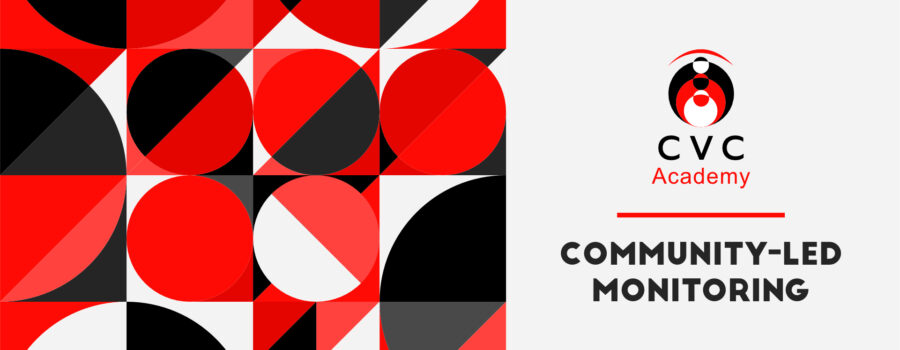Course information
Dates: November 20, 2024 – December 31st, 2024
This online course is centred on providing explanations about Community-led Monitoring (CLM), particularly when it is used to assess HIV prevention and healthcare services. Community-led monitoring offers communities an opportunity to improve the quality and efficiency of health services and to international funders to secure their investments, in HIV, tuberculosis (TB) and malaria prevention, care and treatment programs.
Registration open until May 31st!
What is CLM?
Community-led monitoring (CLM) is a process that involves collecting and analyzing data about HIV services. It’s led by local community organizations, people living with HIV, and other affected groups like key populations. CLM is used to improve HIV services and address local challenges.
How does CLM work?
-
Collect data
CLM collects data about HIV services using a structured platform. This data includes qualitative and quantitative information from people who receive HIV services.
-
Analyze data
CLM analyzes the data to identify opportunities for improvement.
-
Advocate for change
CLM advocates for change by using the data to improve service delivery and create solutions.
-
Feedback loops
CLM establishes feedback loops with program managers and health decision-makers.
Benefits of CLM
- CLM improves the quality, effectiveness, and accessibility of HIV programs.
- CLM empowers communities affected by HIV.
- CLM strengthens community-based organizations and networks.
- CLM builds local leadership.
- CLM enables people to demand high-quality services.
Why is CLM important?
Monitoring HIV prevention and care services is important because it helps to improve programs and services, and to identify populations that need more support. It:
Improve programs
- Monitoring helps to identify what’s working and what needs to be improved.
Identify populations
- Monitoring helps to identify which populations are at risk and need more support.
Support people receiving treatment
- Monitoring helps to ensure that people receiving treatment stay engaged in care.
Assess impact
- Monitoring helps to assess the impact of HIV prevention, testing, and treatment services.
Track outcomes
- Monitoring helps to track outcomes such as mortality, survival, and viral load suppression.
How is CLM done?
- Monitoring involves collecting data from a variety of sources, including labs, healthcare systems, and surveys.
- Monitoring also involves tracking key elements of a program or project, and its intended outcomes.
- Monitoring results in data that is used to make decisions about programs, policy, and resources.
Therefore, in HIV, community-led monitoring (CLM) is an accountability mechanism for HIV responses at different levels. It is led and implemented by local community-led organizations of people living with HIV, networks of key populations, other affected groups or other community entities. It empowers program beneficiaries, civil society organizations, and networks to routinely monitor accessibility and quality of HIV services and client satisfaction.
Why did CVC develop this online introductory course on CLM?
CVC developed this introductory level course to present the fundamentals of CLM. It uses practical applications of concepts, methods and best practices. This course will provide participants with tools, techniques and resources needed for designing, planning, organizing, and monitoring CLM assessments.
At the end of the course, participants will become familiar with the methods and tools used to design and conduct a Community-led monitoring assessment. Participants will have an improved understanding of how CLM can improve the quality of HIV services while promoting learning and accountability. At the end of the course, you will have the confidence to apply the principles of CLM to assess the services provided to the community.
This course uses plain understandable language to ensure that all readers, irrespective of their educational background, easily comprehend the material. In addition to providing relevant information about CLM, the course includes specific information about two approaches that CVC has found particularly useful, namely 1. The Mystery Shopping technique and 2. The Community Score Card methodology.
Each module follows the same format: – a sequence number to indicate the order in which the module should be completed; a title that describes scope and content; and the expected module outcomes which identify the information, skills and abilities that users will acquire and demonstrate upon completion of each module. Participants will be given a broad period to complete each of the modules in their own time.
This six (6) modules course provides certification to participants who successfully complete the training. Once certified you will be able to apply for community-led monitoring opportunities offered by the Caribbean Vulnerable Communities (CVC) coalition in the future. Thus, there will be an evaluation after each module. This will take the form of multiple-choice questions, quizzes throughout the course that will make up part of the final grade awarded. The course will have Zoom sessions staggered after each set of two modules. These zoom sessions will provide participants a space to learn together, share, comment and ask questions. These sessions will also be used by the instructor to reinforce knowledge and learning of participants.
The Caribbean Vulnerable Communities (CVC) is the largest coalition of community-based organizations (CBOs) in the Caribbean. It owns this online course and has commissioned it through the generous support of the Robert Carr Fund (modules 1 through 5) and the Global Fund (module 6).

